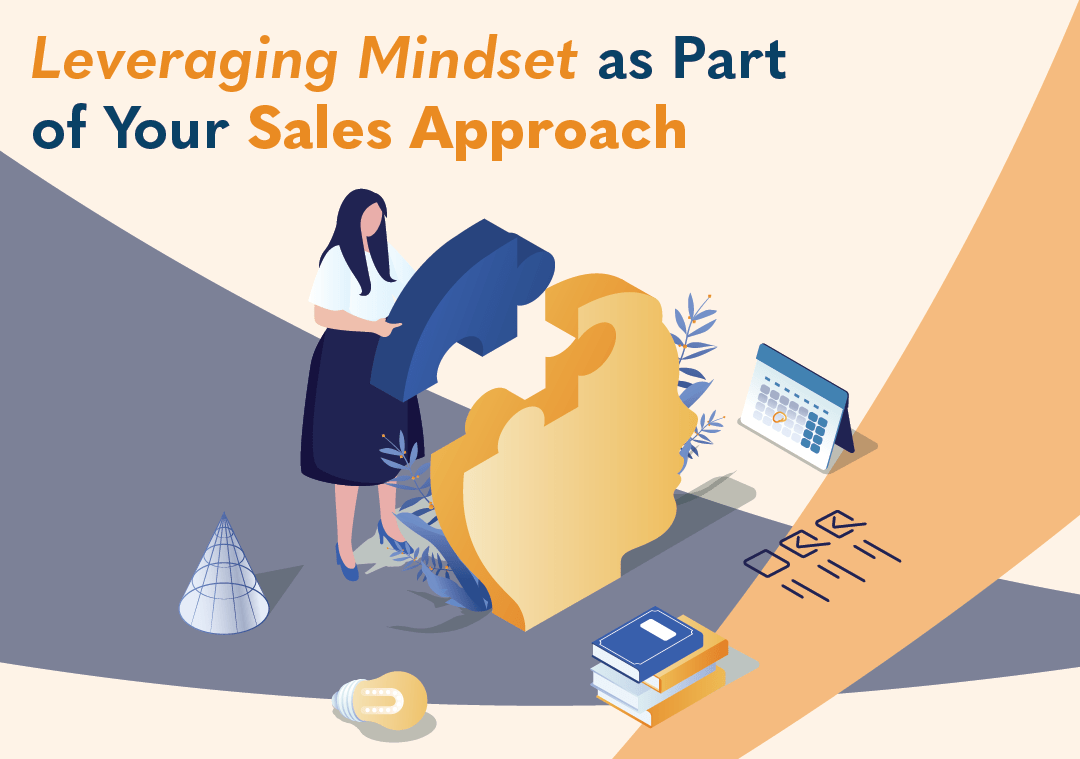Driving Sales Success in Uncertain Times

“Nobody cares, just coach your team” is what Al Davis, then coach of the Raiders, told Bill Parcells, coach of the Giants when he complained about the number of injured players. A slowdown in sales can be a major reason for any CEO to complain, and no one wants to hear excuses. But everyone will want to hear about the solution. This article explores how CEOs can turn around slow sales when they hit a rough patch.
Leading as a CEO in the current business environment presents more significant challenges than in recent memory. Times of uncertainty test the leadership of an organization. When faced with declining revenue for the first time, it is common for leadership to consider reducing headcount as a cost-saving measure. However, it is important to recognize that there are other solutions than downsizing.
Excuses Are Not Leadership
“Customers are scrutinizing every deal. We are seeing longer sales cycles, and less demand is creating margin compression,” I heard a CEO say on Bloomberg TV recently. My first thought was that this CEO is factually accurate. But then the words of Admiral William H. McRaven, a retired United States Navy Admiral and former Navy SEAL, echoed in my mind, “We can make excuses, or we can make progress, but we can’t make both.”
When faced with a challenging sales environment, the traditional playbook calls for cutting headcount and asking the remaining team to sell harder. Yet in sales, problems tend to compound. They never fix themselves. A slowdown in sales is often a symptom of internal issues as much as market dynamics. Simply reducing headcount without addressing the root causes of the slowdown may provide short-term cost savings but will hinder long-term growth and recovery.
The remaining sales team members will naturally feel heightened anxiety, uncertainty, and pressure. As my grandfather was fond of saying, “Pressure busts pipes.” Consequently, excessive pressure on the sales team causes more turnover and other detrimental outcomes. If you are leading today with the carrot-and-stick method of sales motivation, don’t be surprised if you get donkeys.
Reduce Headcount as a Last Resort
“When you do a turnaround, headcount reduction should be a last resort,” said Hubert Joly, former Best Buy CEO and a senior lecturer at the Harvard Business School. When Joly assumed the role of CEO at Best Buy, the company was facing imminent bankruptcy due to fierce competition from Amazon and Walmart. But Hubert brought Best Buy back from the brink of bankruptcy without laying off a single employee.
One of Hubert Joly’s first business decisions was to spend several weeks at various stores, working closely with front-line employees. He recognized the significance of first-hand customer insights before making critical strategic decisions for the company. These insights helped Joly create a plan to fix Best Buy’s two major problems: decreasing revenue and margins.
He discovered that customers sought expert advice when purchasing technology. He also learned that technology buyers prefer to see, feel, and touch products before buying, something Amazon could not offer. Joly recognized the need to streamline bureaucracy, grant more autonomy to individual stores, and introduce price matching to meet customer demands. However, implementing these changes required additional employee training, not cutting staff.
Another strategic move by Hubert Joly was to adopt a partnership mindset toward his competitors. He allocated retail space within Best Buy stores to companies like Microsoft, Apple, and Samsung. This created an additional revenue stream for Best Buy and provided customers with an added incentive to visit the store. By leveraging these partnerships, Joly successfully expanded the offerings available at Best Buy, enhancing the overall shopping experience for customers.
Hubert Joly said, “I feel that much of what I learned at business school or in my early years as an executive is either wrong, dated, or incomplete. If you define your business based on how you’ve historically delivered products and services, you get stuck and don’t evolve. Whereas if you define it around the needs you’re trying to address in the world, it allows you to evolve and stay relevant.”
The Three Ps Growth Strategy
Joly makes a great point because there are many industries today that are facing challenges. But instead of resorting to personnel cuts, they can focus on the three areas that Best Buy leveraged to turn things around: People, Partners, and Products.
People-led Growth: This strategy emphasizes increasing the productivity of sales representatives rather than simply pushing for more aggressive sales tactics. Jonathan Mildenhall, a former marketing executive at Coca-Cola, said, “Hard sell is code for weak brand.” Equipping sales reps with relevant data and information is more effective. By educating both sellers and buyers about the total cost of ownership and aligning messaging on the value offered, organizations can achieve a more productive sales process.
Adopting a people-led growth approach enables sales reps to be better prepared to target larger accounts (going upmarket) and secure larger deals, resulting in higher overall productivity for the organization. Additionally, since contracts are often annual, the churn rate decreases, improving customer retention. This, in turn, allows the company to scale faster with fewer clients, resulting in lower support costs.
Partner-led Growth: In increasingly complex and expansive market opportunities, partner-led growth emerges as a vital strategy. It involves fostering collaboration with partners, cross-selling efforts, and establishing a standardized approach to expand the market share.
This approach challenges traditional hierarchical command and control structures, which view other companies as the enemy. Companies that fail to cultivate trust-based partnerships are already experiencing difficulties and are unlikely to remain sustainable. With the ease of switching vendors on the rise, the key lies in collaboration with partners to build a shared ecosystem. This not only extends the reach of the company but also enhances trust among stakeholders.
Hiring customer service representatives becomes costlier as a company scales, and headcounts can become bloated. Having a partner who can add value and service, these clients can deliver significant value for all parties. Moreover, such partnerships can help in achieving international scalability, further facilitating growth and expansion.
Product-led Growth: Slack is one of the most recognized product-led growth companies. It gained widespread popularity through its self-serve model, allowing individuals and teams to sign up and start using the product with minimal barriers. By focusing on delivering a compelling product experience, Slack achieved remarkable growth and became a leading player in the market.
Product-led growth relies primarily on the product as the driver of acquisition, conversion, and expansion. To be product-led growth means the way the user feels about the experience with the product is more important than the achievements of the company. A positive emotional connection with a client can lead to brand loyalty, increased word-of-mouth referrals, and long-term relationships. Said simply, emotions fuel devotion.
A Diversified Approach
Leaders can be seduced into believing that traditional strategy and conventional wisdom are best. However, Marilyn Hewson, former CEO of Lockheed Martin, reminds us, “During a turnaround, you need to be willing to challenge conventional wisdom and take calculated risks to transform the company.” Hewson’s statement highlights the need for business leaders to resist the seduction of complacency and instead embrace a transformation mindset. When a company is in a sales slump, it requires critical thinking.
Improving sales performance during a slowdown is undoubtedly a challenge for any CEO. It necessitates making difficult decisions promptly. Additionally, it requires the right people in the right roles with a shared vision. A diversified approach is often best for a leader seeking a sales growth strategy during a slowdown. When you diversify your growth strategy and focus on people, partnerships, and products, you give your team new opportunities for success.
Hubert Joly said, “If you believe your role as a leader is to be the smartest in the room and to make sure that everybody knows how smart you are, you’re wrong. If you believe your role as a leader is to create an environment where others can be successful, then you’re on the right track. You need to be a value-driven leader. Integrity in this world of transparency is more important than ever. It’s not just about complying with the rules. It’s about doing the right thing.”
In Conclusion
Leading a business through a sales slowdown can be a challenging task. However, the success story of Hubert Joly and Best Buy demonstrates the potential of finding innovative, people-centric solutions for a successful turnaround. It’s essential to recognize that the most effective approach to improving sales will vary depending on your business, target market, and industry dynamics.
To enhance the effectiveness of your sales growth strategy, it is crucial to regularly analyze your sales data, metrics, and customer feedback. This analysis enables you to identify any bottlenecks or areas that require improvement within your sales workflows. By leveraging data-driven insights, you can make informed decisions and optimize your sales strategies to achieve better outcomes.
The decision-making process at the executive level is the critical factor, as sound choices will drive positive outcomes, while poor decisions can take months or years to recover from. Therefore, leaders must remember the words of Al Davis, “Nobody cares. Just coach your team.” This sentiment rings true when facing a sales slowdown. What truly matters is coaching your team.

- Account Planning (16)
- Awards (42)
- Client Testimonial (37)
- Personal Branding (21)
- Podcast (12)
- Research (77)
- Sales Career Development (90)
- Sales Coaching (165)
- Sales Consulting (141)
- Sales Culture (181)
- Sales Enablement (380)
- Sales Leadership (112)
- Sales Management (268)
- Sales Negotiation (11)
- Sales Prospecting (136)
- Sales Role-Playing (19)
- Sales Training (242)
- Selling Strategies (279)
- Soft Skills (78)
- Talent Management (101)
- Trusted Advisor (29)
- Virtual Selling (57)
- Webinar (13)




























